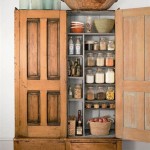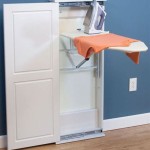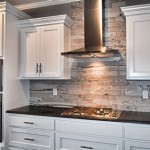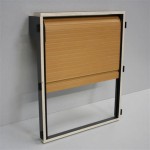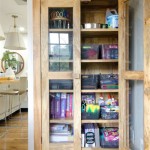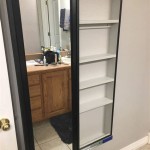Cleaning Years of Grease From Kitchen Cabinets
Kitchen cabinets, particularly those situated near the cooking area, are susceptible to accumulating grease over time. This accumulation can be unsightly and harbor dirt and bacteria. Removing years of accumulated grease requires a strategic approach, combining appropriate cleaning solutions with effective techniques to avoid damaging the cabinet surfaces.
The accumulation of grease on kitchen cabinets is a gradual process, often unnoticed until a significant layer has formed. This layer typically consists of airborne cooking oils, food splatters, dust, and other particulate matter that adheres to the surfaces. The type of cooking, the frequency of cooking, and the ventilation system in the kitchen all contribute to the speed and severity of grease buildup. Cabinets located directly above or beside the stove are naturally more vulnerable.
Several factors influence the difficulty of removing accumulated grease. The type of cabinet finish, the duration of grease accumulation, and the environmental conditions within the kitchen all play a role. Painted cabinets, for example, may be more susceptible to damage from abrasive cleaners than cabinets with a polyurethane or lacquer finish. Similarly, grease that has been allowed to harden over several years will be more resistant to removal than a more recent accumulation. High humidity levels can also exacerbate the problem, as moisture can cause the grease to become stickier and more difficult to dissolve.
Assessing the Cabinet Material and Finish
Before commencing any cleaning process, it is crucial to identify the material and finish of the kitchen cabinets. This assessment is paramount for selecting the appropriate cleaning solutions and techniques, preventing irreversible damage. Common cabinet materials include wood, laminate, and metal, each requiring a specific cleaning approach. Similarly, cabinet finishes can range from paint and varnish to polyurethane and lacquer, each exhibiting varying degrees of resistance to different cleaning agents.
Wooden cabinets, whether solid wood or wood veneer, are particularly susceptible to damage from excessive moisture and abrasive cleaners. Prolonged exposure to water can cause the wood to warp, swell, or crack. Abrasive cleaners can scratch the finish, dulling the appearance and potentially removing the protective layer. Laminate cabinets are generally more resistant to moisture than wooden cabinets but can still be damaged by harsh chemicals and abrasive scouring pads. Metal cabinets, often found in older kitchens, are generally the most durable but can be prone to rust or corrosion if the finish is damaged.
The cabinet finish is a critical factor in determining the appropriate cleaning method. Painted cabinets, especially those with a matte finish, are particularly vulnerable to scratching and discoloration. Varnish and lacquer finishes offer more protection but can still be damaged by harsh chemicals and abrasive cleaners. Polyurethane finishes are generally the most durable and resistant to damage, but even these finishes can be compromised by prolonged exposure to harsh chemicals or abrasive cleaning methods.
A simple test can be performed to assess the compatibility of a cleaning solution with the cabinet finish. Select an inconspicuous area of the cabinet, such as the inside of a door or the back of a drawer. Apply a small amount of the cleaning solution to the area and allow it to sit for a few minutes. Then, wipe the area clean and inspect it for any signs of damage, such as discoloration, softening, or scratching. If no damage is observed, the cleaning solution is likely safe to use on the rest of the cabinets.
Effective Cleaning Solutions for Grease Removal
Numerous cleaning solutions are available for removing grease from kitchen cabinets, ranging from commercially formulated products to homemade solutions. The choice of cleaning solution should be guided by the type of cabinet material and finish, the severity of the grease accumulation, and personal preferences regarding chemical exposure. It is crucial to prioritize safety and avoid using harsh chemicals that can damage the cabinets or pose health risks.
Commercial degreasers are specifically formulated to dissolve grease and oil. These products typically contain a blend of solvents, detergents, and surfactants that work synergistically to break down grease buildup. It's important to select a degreaser that is specifically designed for use on kitchen cabinets and to follow the manufacturer's instructions carefully. Always test the degreaser on an inconspicuous area of the cabinet before applying it to the entire surface.
Dish soap is a widely available and effective cleaning agent for removing grease from kitchen cabinets. Its mild formulation makes it suitable for use on most cabinet materials and finishes. To create a dish soap solution, mix a few drops of dish soap with warm water. Apply the solution to the cabinets using a soft cloth or sponge, and then rinse thoroughly with clean water. Dry the cabinets with a clean, dry cloth to prevent water spots.
Baking soda is a natural abrasive that can be used to scrub away stubborn grease buildup. To create a baking soda paste, mix baking soda with water until it forms a thick paste. Apply the paste to the greasy areas of the cabinets and gently scrub with a soft cloth or sponge. Rinse thoroughly with clean water and dry with a clean cloth. Use baking soda with caution on delicate finishes, as it can scratch the surface if applied too aggressively.
Vinegar is a natural degreaser and disinfectant that can be used to clean kitchen cabinets. Its acidic properties help to dissolve grease and kill bacteria. To create a vinegar solution, mix equal parts white vinegar and water. Apply the solution to the cabinets using a spray bottle or a soft cloth, and then wipe clean with a clean cloth. The strong odor of vinegar may be off-putting to some, but it dissipates quickly after cleaning.
For particularly stubborn grease buildup, a combination of cleaning solutions may be necessary. For example, you could start by applying a dish soap solution to loosen the grease, followed by a baking soda paste to scrub away the remaining residue. Alternatively, you could use a commercial degreaser for the initial cleaning, followed by a vinegar solution to disinfect the surface. Experiment with different combinations until you find one that works effectively for your specific cabinets.
Step-by-Step Cleaning Process
A systematic approach is vital for effectively cleaning years of grease from kitchen cabinets. The following step-by-step process provides a comprehensive guide, ensuring thorough cleaning while minimizing the risk of damage to the cabinet surfaces.
Preparation is key. Begin by removing all items from the countertops and clearing the area around the kitchen cabinets. Protect the floor beneath the cabinets with drop cloths or old towels to prevent spills and drips. Gather all the necessary cleaning supplies, including cleaning solutions, cloths, sponges, scrub brushes, and safety equipment.
Dust and loose debris must be removed. Use a vacuum cleaner with a brush attachment or a dry cloth to remove any loose dust, dirt, or debris from the surface of the cabinets. Pay particular attention to crevices, corners, and areas around handles and knobs. Removing loose debris will prevent it from becoming embedded in the grease during the cleaning process.
Application of the chosen cleaning solution follows. Apply the selected cleaning solution to the greasy areas of the cabinets. Use a spray bottle to apply the solution evenly, or apply it directly to a cloth or sponge. Allow the solution to sit on the surface for a few minutes to loosen the grease. The duration of the soaking period will depend on the severity of the grease accumulation and the strength of the cleaning solution.
Gentle scrubbing removes the loosened grease. Using a soft cloth, sponge, or scrub brush, gently scrub the greasy areas of the cabinets. Avoid using abrasive scouring pads or steel wool, as these can scratch the finish. Apply moderate pressure and work in a circular motion to loosen and remove the grease. For stubborn grease buildup, you may need to repeat this step several times.
Rinsing is crucial for removing cleaning solution residue. Rinse the cabinets thoroughly with clean water to remove any remaining cleaning solution. Use a clean cloth or sponge to wipe away the water and ensure that no residue remains. Residue can attract dirt and grime, negating the effectiveness of the cleaning process.
Drying is final step. Dry the cabinets with a clean, dry cloth to prevent water spots. Pay particular attention to edges, corners, and areas around hardware. Buff the cabinets with a soft cloth to restore the shine and luster of the finish.
Regular maintenance is essential for preventing future grease buildup. Wipe down the cabinets regularly with warm, soapy water to remove fresh splatters and spills. Use a range hood or exhaust fan while cooking to vent steam and grease-laden air. Consider applying a protective coating to the cabinets, such as a furniture polish or wax, to help repel grease and dirt.

How To Clean Kitchen Cabinets Everyday Skate

How To Remove Grease From Kitchen Cabinets 3 Methods Bob Vila

Get Grease Off Kitchen Cabinets Easy And Naturally

Degrease Kitchen Cabinets With An All Natural Homemade Cleaner

How To Remove Years Of Old Nasty Grease Off Kitchen Cabinets

How Remove Grease From Wood Kitchen Cabinets

My Discovery On Cleaning Extremely Thick Grease From Kitchen Cabinets

How To Clean Sticky Grease Off Kitchen Cabinets Ovenclean

How To Clean Old Grease From Kitchen Cabinets Fast Easy Sponge S

How To Deep Clean Kitchen Cabinets And Keep Them Looking Gorgeous Everyday Skate
Related Posts

